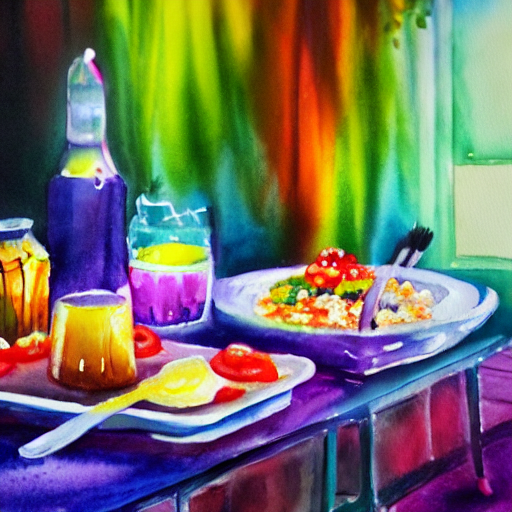As a Black mom raising a beautiful daughter, I know how important it is to pay attention to what we put into our bodies. We want to nurture our temple and fuel our minds and spirits with the best things.
But did you know that our everyday food can contain scary chemicals we can’t even pronounce? We’re talking about chemicals that have been linked to diseases, cancer, and other health issues. Yikes!
So how do you know what chemicals are lurking in your food? Well, I’m here to provide you with a quick clean out guide on 10 scary chemicals found in food that you should remove from your diet immediately. Let’s break down each chemical together so you have peace of mind when selecting meals for your family.

What Are the Most Common Chemicals Found in Foods?
As a busy Black mom, I’m sure you want to always make sure that your family is eating healthy and avoiding potential toxins. But it can be hard to know what’s really lurking in that delicious dinner. As it turns out, there are 10 common chemicals found in everyday foods that you should keep an eye out for.
When I started to look into these ingredients, I was shocked to find out how much of them were present in the food we eat on a daily basis. Below is a list of the 10 most common chemicals and where they are typically found:
- Monosodium Glutamate (MSG): Commonly added as a flavor enhancer to processed foods like chips, soups, and frozen dinners
- Artificial Food Dyes: Found in many packaged and processed foods like breakfast cereal and drinks
- Partially Hydrogenated Oils: Usually found in fried foods, baked goods, and margarine
- High Fructose Corn Syrup (HFCS): Present in just about any type of processed food or drink—including breads, pasta sauce, ketchup, and more!
- Sodium Nitrite/Nitrates: Added as preservatives to lunch meats, bacon and even certain cheeses.
- Trans Fats: Found in many fried foods or packaged snacks like chips.
- Bisphenol A (BPA): An industrial chemical commonly used to line canned food containers.
- Phthalates: Usually used to add flexibility or durability to certain types of plastic packaging materials.
- Perchlorate: Used as an oxidizer and fuel booster found in baking powder or bleached flour-based items such as breads
How to Identify the Dangerous Chemicals in Food Products
It’s not enough to just be aware of the 10 chemicals that are dangerous for our health; we also need to know how to identify them. Unfortunately, food manufacturers can hide dangerous ingredients under a variety of names. Common scientific or chemical names may be listed on the label, but we can’t tell from the name alone what might be included in the mix.
In order to know exactly what is being added to our food and drinks, we need to examine a few key areas. For instance, look at the ingredient list itself—the long list of scientific-sounding words—and make sure you take note of anything that sounds unfamiliar. Focus on artificial colors, stabilizers and preservatives, as these may mask some of the more dangerous chemicals on this list. Additionally, take a deeper look at any “natural” flavorings and see if they contain mono sodium glutamate (MSG) or artificial sweeteners like high-fructose corn syrup or aspartame. By understanding what’s lurking in your food and drinks, you can begin eating healthier immediately!
Spotting Hidden Sources of Chemicals in Processed Food
You might be surprised at how many foods contain scary chemicals, so one of the best ways to give your diet a clean-out is to check food labels. However, it can be hard to identify certain chemicals even if you are reading labels. Listed here are 10 chemicals that you should watch out for in your food:
Monosodium Glutamate (MSG)
MSG is an additive found in many processed foods and restaurant dishes. It’s used as a flavor enhancer, but it can cause headaches and nausea in sensitive people. To avoid MSG, avoid processed foods and look for “No MSG Added” labels on packaged foods.
High Fructose Corn Syrup (HFCS)
HFCS is a common sweetener found in sodas and other sweetened drinks, as well as salad dressings and sauces. It can increase levels of triglycerides – a type of fat – which increases the risk of heart disease and stroke. Choosing natural sweeteners instead can help you reduce your intake of HFCS.
Sodium Benzoate
This preservative is often added to processed fruit juices, sodas, pickles, condiments and other preservative-rich foods as a way to keep them from spoiling quickly. Although its long-term effects are still being studied, some animal studies suggest that it may be harmful to health if consumed in excess over time.
Artificial Colors
Foods containing artificial colors will often list “color added” on the ingredients label along with the name of the color used; for example carmine or annatto are common artificial colors found in certain frozen meals, snacks and juices. These compounds have been
Side Effects of These Chemicals on Your Health
Let’s talk about the repercussions of consuming scary chemicals. There’s a laundry list of side effects that these ingredients can have on your health, which is why I’m urging you to clean out your pantry! You might be surprised at how much better you’ll feel once you make the switch to cleaner foods.
Many of these chemicals have been linked to certain diseases including asthma, cancer, and neurological damage. For example, phthalates can cause fertility issues in both men and women by affecting hormone regulation, while BHA has been known to be carcinogenic. There’s also evidence showing high levels of trans fats increase the risk of heart disease, stroke, and type 2 diabetes.
It’s important to note that even small amounts of these chemicals can cause harm over time—especially if they’re consumed on a regular basis. To keep yourself safe, it’s best practice to check food labels for any red flags (more on this later), as well as avoiding processed foods altogether if possible.

The 10 Food Chemicals to Avoid Immediately
When it comes to scrubbing out scary chemicals from your food, there are 10 that you should work to avoid at all costs. I’ve already been talking a lot about artificial sweeteners and trans fats, but now let’s zoom out a bit and look at the deeper picture.
Here are the top 10 food chemicals you should be avoiding right away:
- Artificial Sweeteners – Aspartame, sucralose and saccharin
- Artificial Flavors – Often made with chemicals like MSG and hydrolyzed vegetable protein
- Borax – A common ingredient in detergents, soaps and other cleaning products
- Carrageenan – Used to thicken processed foods like dairy products, salad dressings and sauces
- High Fructose Corn Syrup – Commonly used as an artificial sweetener in processed foods
- Potassium Bromate/Iodate – Used as a dough conditioner for bread and baked goods
- Propyl Gallate – Common preservative found in processed food packaging
- Sodium Nitrate/Nitrite – Used to preserve meat products such as bacon, sausage, hot dogs and lunch meats
- Sodium Sulfite– Used to bleach raw foods like dried fruits or dehydrated potatoes
- Synthetic Colors & Dyes– Made with coal tar derivatives or petroleum-based ingredients
The best way to avoid these chemicals is by eating as close to mother nature as possible. Whenever you can, opt for organic fruit, veggies, nuts and other whole foods. In addition to tasting better overall and having more nutrients on board, they’re also free of any added preservatives or fillers.
Simple Tips for Avoiding Toxic Additives
I’ve done my research and listed ten toxic chemicals that I immediately removed from my diet. To see the full list of these scary chemicals, click the link below.
Now that you know what to avoid, here are my three simple tips for avoiding these and other toxic food additives:
- Read the labels carefully – When checking out the labels, watch out for any ingredients with numbers in them as they can be certain food additives or preservatives.
- Shop organic and natural foods – Try to shop organic and natural foods whenever possible as they are less likely to contain these toxic chemicals.
- Cook your own meals – Cooking your own meals with fresh ingredients is the best way to ensure that you’re not consuming any of these toxic chemicals.
Taking a few extra steps will help ensure that you are feeding your family healthier options free of these scary additives!
With this quick clean out guide, you have the power to create a healthier lifestyle for you and your family. Taking that first step to start being aware of what you’re putting into your body can be overwhelming, but it really isn’t that difficult once you identify what to look out for.
The scary chemicals lurking in our food can be harmful to your health and wellbeing in the long-term. It’s my mission to help Black moms around the world create healthier and more sustainable diets for their families. Together, we can make the case for cleaner, healthier food options, so that healthier food choices can become more accessible and just as delicious!